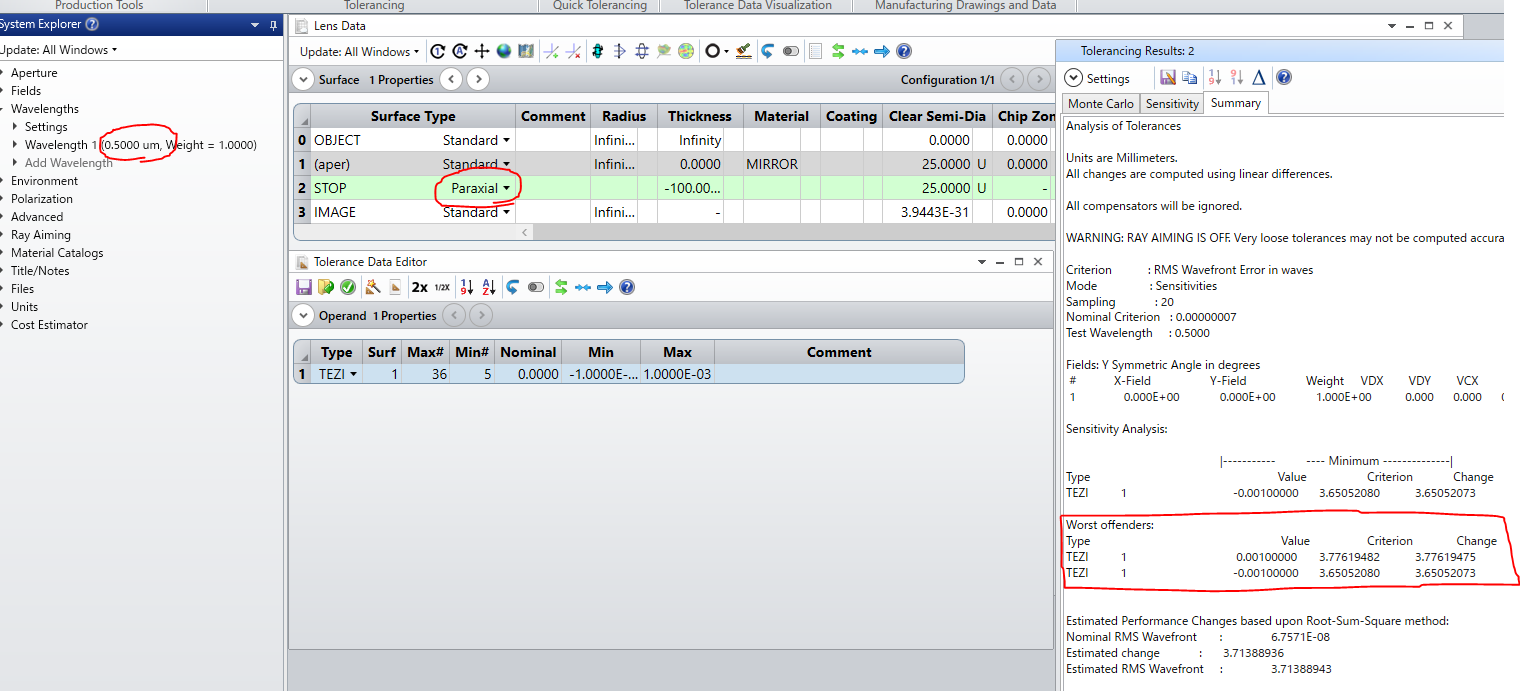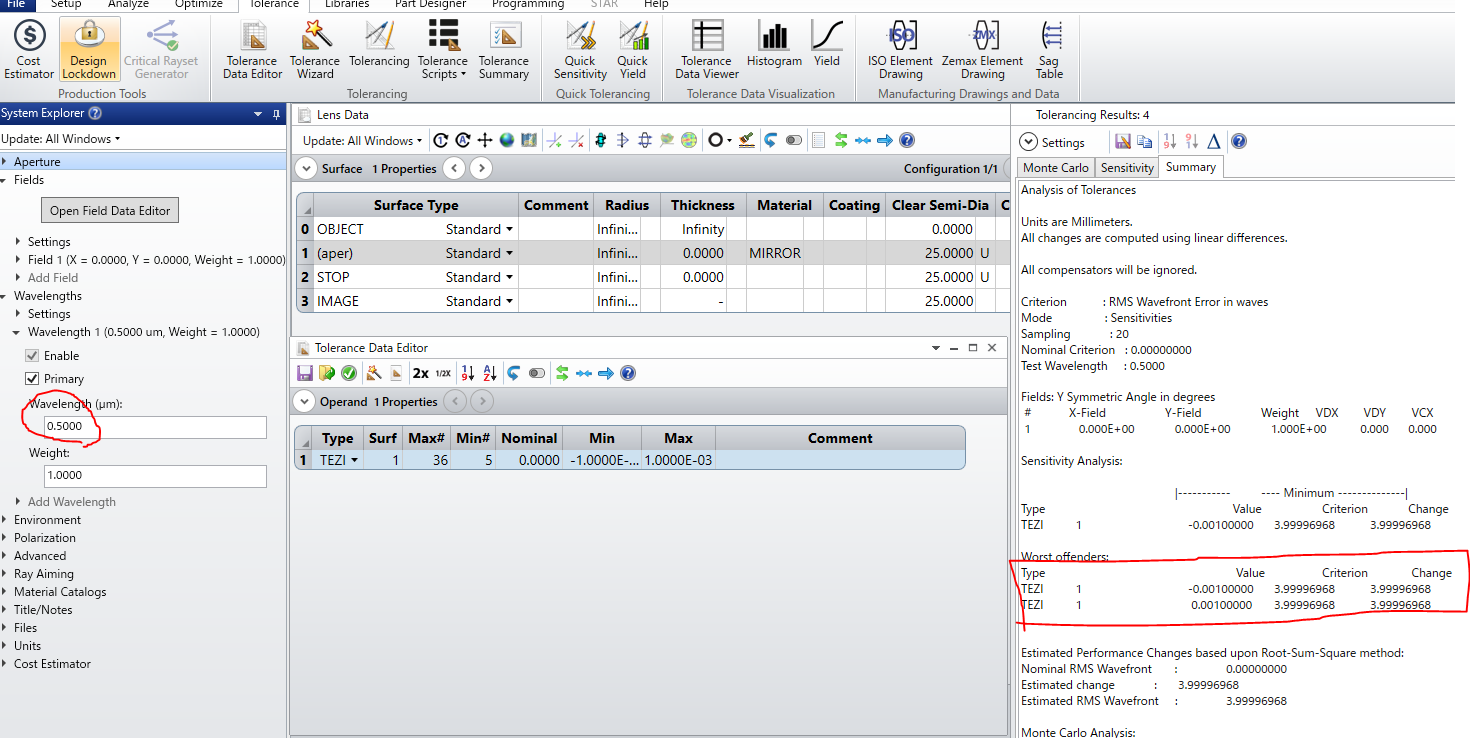I am testing TEZI operand to confirm if it really produces specified RMS surface error.
I created a simple toy lenses
1. flat mirror + paraxial surface to converge rays
2. flat mirror + afocal setting
I added surface errors to be 1um rms using TEZI operand and ran the tolerance command.
I set the wavelength to be 0.5 um.
To my understanding surface error is 2λrms. The mirror doubles the error and result wavefront RMS should be 4λrms.
The configuration 2(the afocal setting) seems to return the correct result, whereas configuration 1(paraxial surface) returns a little different values than I expected.
I wonder why this happens.
I attached the two zos files.
Thank you for your cooperation.
Screenshot of configuration 1 (paraxial surface)

Screenshot of configuration 2 (afocal setting)




